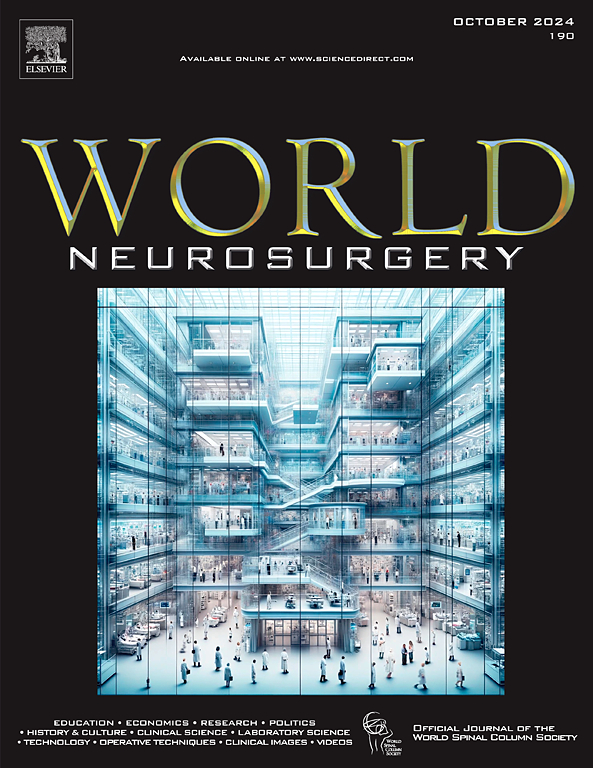The Impact of Pituitary Stalk Sacrifice on Recurrence and Endocrine Dysfunction During Craniopharyngioma Surgery: A Systematic Review of the Literature
IF 1.9
4区 医学
Q3 CLINICAL NEUROLOGY
引用次数: 0
Abstract
Background
Craniopharyngioma is a benign, locally invasive tumor of the sellar-suprasellar region. Surgery can be curative but may require sacrifice of the pituitary stalk, which often leads to hypopituitarism. The risk/benefit of this maneuver is not well understood.
Methods
We performed a systematic English literature search on craniopharyngioma surgery with data on stalk preservation. We used meta-analysis for odds ratio in R software (R Foundation for Statistical Computing, Vienna, Austria). We have also used available raw data for recurrence risk using the Kaplan-Meier curve.
Results
Significantly lower recurrence risk was noted in patients in whom the stalk was sacrificed (11% vs. 23%, P = 0.003). This held true in patients after endoscopic endonasal approach (EEA) regardless of the extent of resection (P = 0.001) and in patients with gross total resection after EEA (P = 0.032). Survival analysis confirmed lower recurrence risk in adults with gross total resection after EEA and stalk sacrifice (P = 0.007, log-rank test). In patients with stalk sacrifice, the risk of panhypopituitarism was more than doubled (85% vs. 40%; P < 0.001), as was the risk of somatotrope insufficiency (89% vs. 32%; P < 0.001). Additionally, there was an approximate 30% increase in the risk of hypocortisolemia (94% vs. 62%; P < 0.001), hypothyroidism (96% vs. 59%; P < 0.001), gonadotrope insufficiency (92% vs. 59%; P < 0.001), and diabetes insipidus (80% vs. 55%; P < 0.001). The risk of weight gain was also significantly increased (30% vs. 16%; P = 0.025).
Conclusions
Our review indicates that stalk sacrifice is often required to achieve a durable cure in patients with craniopharyngiomas. While stalk sacrifice increases the risk of postoperative endocrinopathy, even if the stalk is preserved, many patients will still become hypopituitary.
求助全文
约1分钟内获得全文
求助全文
来源期刊

World neurosurgery
CLINICAL NEUROLOGY-SURGERY
CiteScore
3.90
自引率
15.00%
发文量
1765
审稿时长
47 days
期刊介绍:
World Neurosurgery has an open access mirror journal World Neurosurgery: X, sharing the same aims and scope, editorial team, submission system and rigorous peer review.
The journal''s mission is to:
-To provide a first-class international forum and a 2-way conduit for dialogue that is relevant to neurosurgeons and providers who care for neurosurgery patients. The categories of the exchanged information include clinical and basic science, as well as global information that provide social, political, educational, economic, cultural or societal insights and knowledge that are of significance and relevance to worldwide neurosurgery patient care.
-To act as a primary intellectual catalyst for the stimulation of creativity, the creation of new knowledge, and the enhancement of quality neurosurgical care worldwide.
-To provide a forum for communication that enriches the lives of all neurosurgeons and their colleagues; and, in so doing, enriches the lives of their patients.
Topics to be addressed in World Neurosurgery include: EDUCATION, ECONOMICS, RESEARCH, POLITICS, HISTORY, CULTURE, CLINICAL SCIENCE, LABORATORY SCIENCE, TECHNOLOGY, OPERATIVE TECHNIQUES, CLINICAL IMAGES, VIDEOS
 求助内容:
求助内容: 应助结果提醒方式:
应助结果提醒方式:


